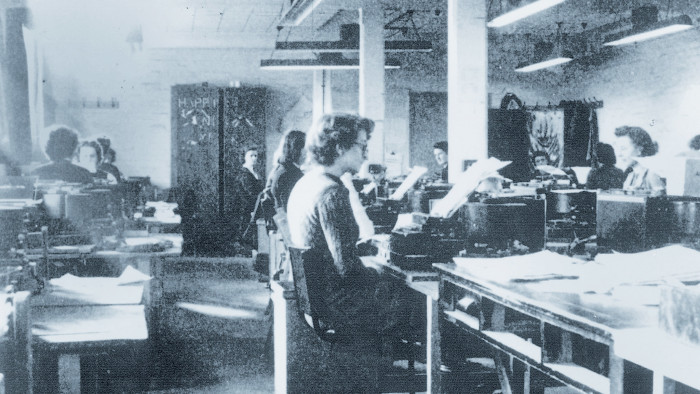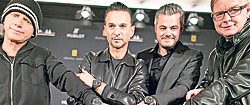Luxury brands add value with charity partnerships

Roula Khalaf, Editor of the FT, selects her favourite stories in this weekly newsletter.
Corporate social responsibility (CSR) is often dismissed as a featherweight concept dreamt up by marketing men. But in the watch world, which grows richer by the year and is increasingly forging links with non-profit organisations, it can produce significant results.
Recent efforts prove the point – and highlight the wide variety of watchmaker’s approaches to CSR.
In September 2013, 33 unique fine watches donated by brands went under the hammer in Monaco at the Only Watch auction in aid of research into Duchenne muscular dystrophy, raising more than €5m.
In October, Rolex announced Olafur Eliasson, the artist, and Michael Ondaatje, the novelist, would be among the experts taking part in its 2014-15 Mentor and Protégé Arts Initiative, an arts mentoring scheme that has drawn high-profile names since 2002.
And the Audemars Piguet Foundation has worked on 75 projects in 34 countries to raise awareness of environmental issues, with a focus on protecting forests.
Whatever the motives, the imperative for luxury watch brands to “give something back” by lending support to charities is an increasing priority. But are consumers convinced?
Some experts say the luxury industry’s involvement in charitable and social projects can create consumer confusion. “While individuals can be both ‘selfish’ and ‘selfless’ depending on the circumstances, they can never be both at the same time,” says Carlos Torelli, associate professor of marketing at the Carlson School of Management, University of Minnesota.
Catherine Walker, a researcher at the Directory of Social Change, a UK independent research charity, and author of The Company Giving Almanac, says: “The concept of CSR clashes psychologically with the motivations for buying luxury goods, and needs to be carefully managed.”
But she adds, “Any CSR is better than no CSR, and while in order to change things you’d need people to stop buying luxury watches, and give more money to developing countries, it may be easier to persuade them to give a small percentage of their purchase price to good causes.”
Certainly some non-profit organisations are happy to enter into such arrangements with luxury watch brands. Médecins Sans Frontières, the humanitarian aid organisation, last year partnered with Nomos Glashütte, the German watch house. MSF receives a donation of 100 euros, pounds or dollars from the sale of each of 6,000 limited edition watches sold by the company in Germany, the UK and the US. Proceeds from this tie-up will be added to an initial €200,000 donated to MSF when the scheme was first run in Germany.
“Partnerships with luxury brands are quite new for MSF,” says Antoine Bogaerts of MSF’s fundraising team. “It helps us to reach people who we might not have had the opportunity to address before.”
He adds that £100 can go a long way. The sum will pay for 37 full sets of emergency wound dressing supplies for treatment in the field, or 25 wool blankets to protect displaced people from the cold in winter.
Nomos Glashütte acknowledges that luxury products have no relevance in crisis situations, but says this should not prevent it from supporting the aid agency. “Since mechanical watches were not on MSF’s priority list for emergency aid, we figured that funds and additional awareness for their organisation was the best we could do,” says Uwe Ahrendt, the brand’s chief executive.
Luxury watch retailers are also involved. Half of the donation made to MSF under the Nomos Glashütte scheme will come from retailers. One of the participating UK retailers is Watches of Switzerland.
“This project has given us an opportunity to support an organisation whose mission and values we believe in, and to behave in a socially responsible way,” says Justin Stead, chief executive of Aurum Holdings, parent company of Watches of Switzerland, Goldsmiths and Mappin & Webb.
Stephen Urquhart, Omega’s president, believes brands benefit from CSR because projects often reflect the mood of consumers. Omega’s latest CSR project is with the GoodPlanet Foundation. It will help fund two ocean-based projects near the Indonesian island of Sulawesi.
“Companies in all industries are aware that their potential customers are socially aware and are attracted by companies that share their passions, whatever they might be,” he says.
Although it has become a hackneyed phrase, the merits of “doing good” are enough motivation for some brands. “We believe it’s everyone’s responsibility to be respectful of the environment,” says Zahra Kassim-Lakha, Jaeger-LeCoultre’s global head of strategy.
“For us, that means environmental protection, commitment to human values, and the preservation of knowledge and skills.”
Jaeger-LeCoultre, for its part, is involved with the Unesco World Heritage Centre and (Red), the Aids charity, as well as the UK-based Prince’s Foundation for Children and the Arts.
For smart-thinking companies, CSR activities can create opportunities to enrich a brand’s values. In June, the British brand Bremont launched Codebreaker, a watch made in partnership with the Bletchley Park Trust, which maintains the site where Alan Turing, the cryptanalyst, and his colleagues broke the Enigma code during the second world war.
The watch enhances Bremont’s profile as a British company by incorporating wood from Bletchley’s Hut 6, metal from an Enigma coding machine rotor and paper taken from punch cards used by the codebreakers. Bremont paid the trust an undisclosed figure at the start of the project, which it intends to recoup through watch sales.
“If you walk around Bletchley Park, it’s falling down. It needs money, it needs support,” says Giles English, Bremont co-founder. “We can help do something. Their PR operation is small-scale and we can add weight to it. In return, they’re giving us an amazing story.”
——————————————-
Good luxury: Industry tie-ups
By Robin Swithinbank and Justin Cash
Hublot

The watch company has collaborated with Depeche Mode, the pop group, on a limited edition watch. Part of the proceeds are donated to Charity: Water, a non-profit organisation that delivers safe drinking water to developing countries.
Graff Diamonds
Laurence Graff, the company’s founder, set up the Facet Foundation in 2008 to support education and healthcare projects in sub-Saharan Africa, where many of the company’s stones are mined.
Bulgari
The Italian house has raised more than $25m since 2009 for Save the Children. A version of its B.Zero1 ring engraved with the charity’s logo is sold for $420, from which Save the Children receives a $90 donation.
Nomos Glashütte
The quirky German brand has created a series of limited-edition watches to raise money for Médecins Sans Frontières, the French humanitarian NGO, with a target to raise $1m.
Bremont
In 2012, the British watch brand’s Victory timepiece to raised funds for the National Museum of the Royal Navy. This year, it released the Codebreaker to raise funds for the Bletchley Park Trust.
Comments